Two Third-year students, shaped by an early introduction to printmaking at UVA
Third-year University of Virginia students Brenna Monk and Kaia Dunne have a hard time staying away from the printmaking studio. When …
Third-year University of Virginia students Brenna Monk and Kaia Dunne have a hard time staying away from the printmaking studio.
When required classes for their other majors conflicted with the advanced printmaking classes they wanted to take, the friends, who met during a printmaking class their first year, contacted associate studio art professor Akemi Ohira to arrange an independent study.
“We knew we could not stay away from the studio, so we needed another outlet if we weren’t able to be in the class,” said Dunne, a member of the club swim team who is studying chemistry and studio art.
Ohira arranged for Monk and Dunne to learn intaglio printing, a technique that involves submerging zinc plates in an acid bath, etching designs onto the softened metal and applying different layers of ink to print the designs. Specifically, she challenged the students to use three different layers of color in their prints, making the process significantly more difficult.
“Printmaking is all about problem-solving,” Ohira said. “You really have to understand how to combine each of the different processes to make an image work. It’s fascinating, and sometimes it can be frustrating.”
“There are so many variables that could go wrong. It could be the roller, the pressure level of the printing press, the acid, the order of the steps,” said Monk, who is studying arts administration and is also on UVA’s club figure skating team. “I love the medium in part because it forces you to fail. It really pushes you to think, and it’s awesome to know that we are encouraged to come here and think outside of the box.”
The students, who are also both docents at UVA’s Fralin Museum of Art, worked in the printmaking studio throughout the semester. UVA Today checked in with them several times to watch their prints progress.
Take a look at the process and the finished products below.
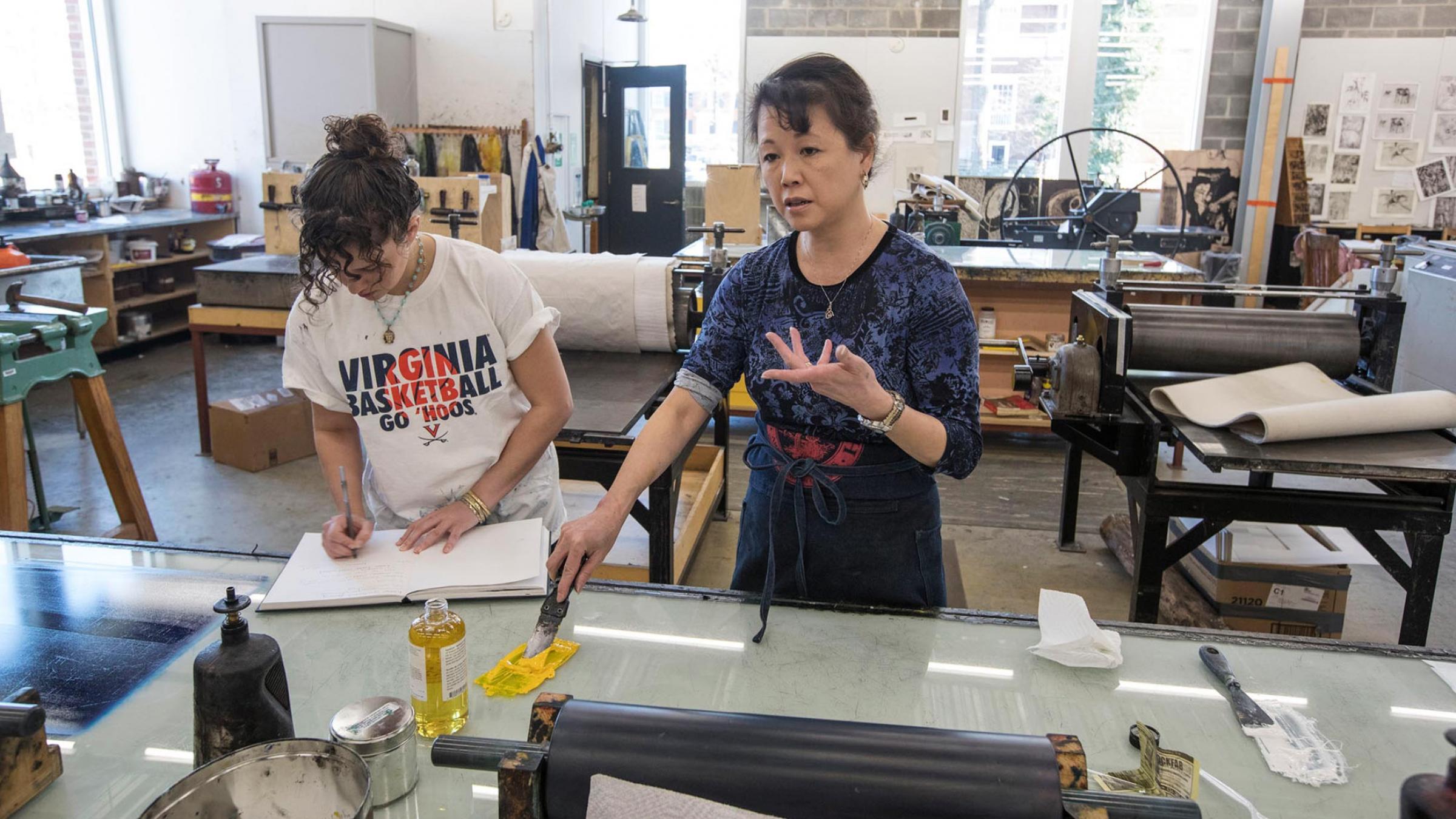
Ohira, right, met with Monk, left, and Dunne to demonstrate the technique of intaglio printing, in which images are etched onto metal plates with sunken grooves to hold ink.
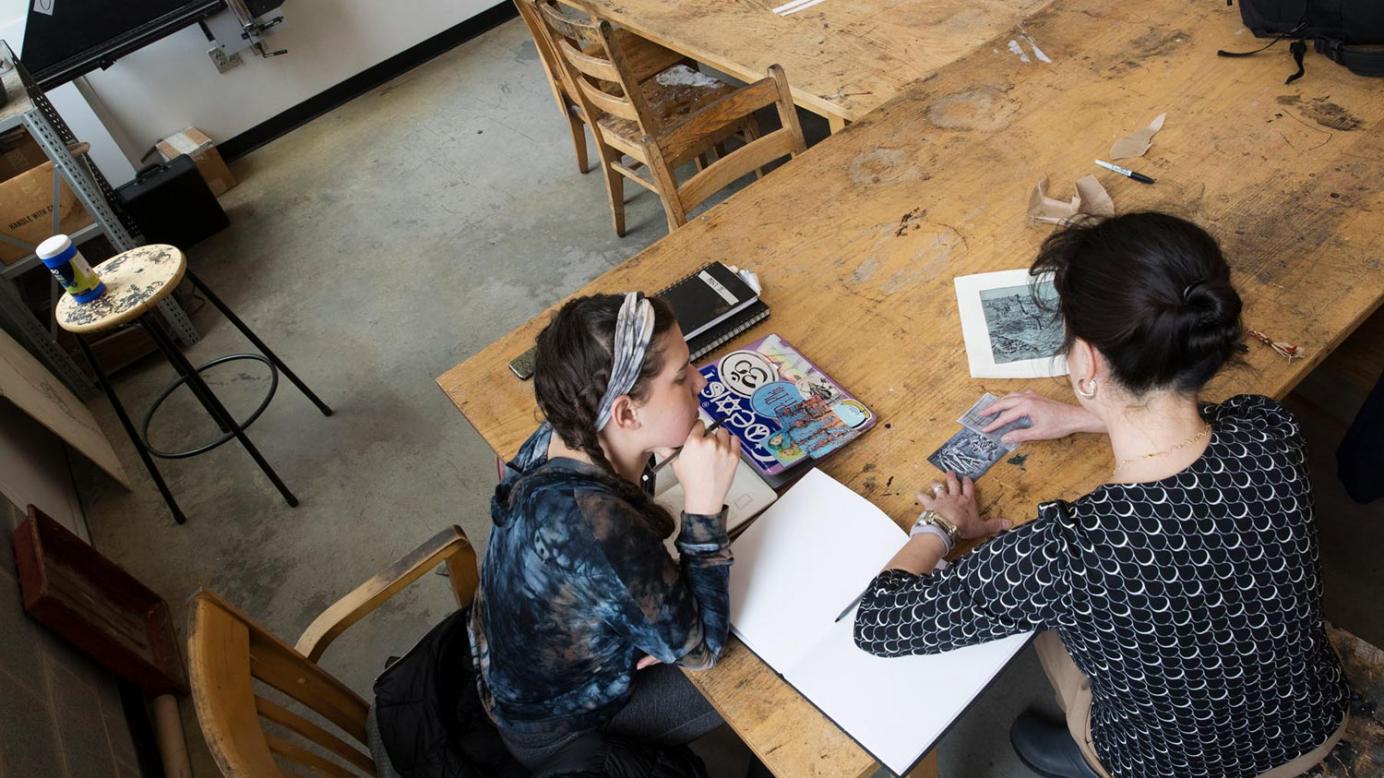
Ohira met with each student to plan the prints they wanted to make this semester. Monk, the figure skater, focused on human expression and motion, while Dunne focused more on objects and abstract designs.
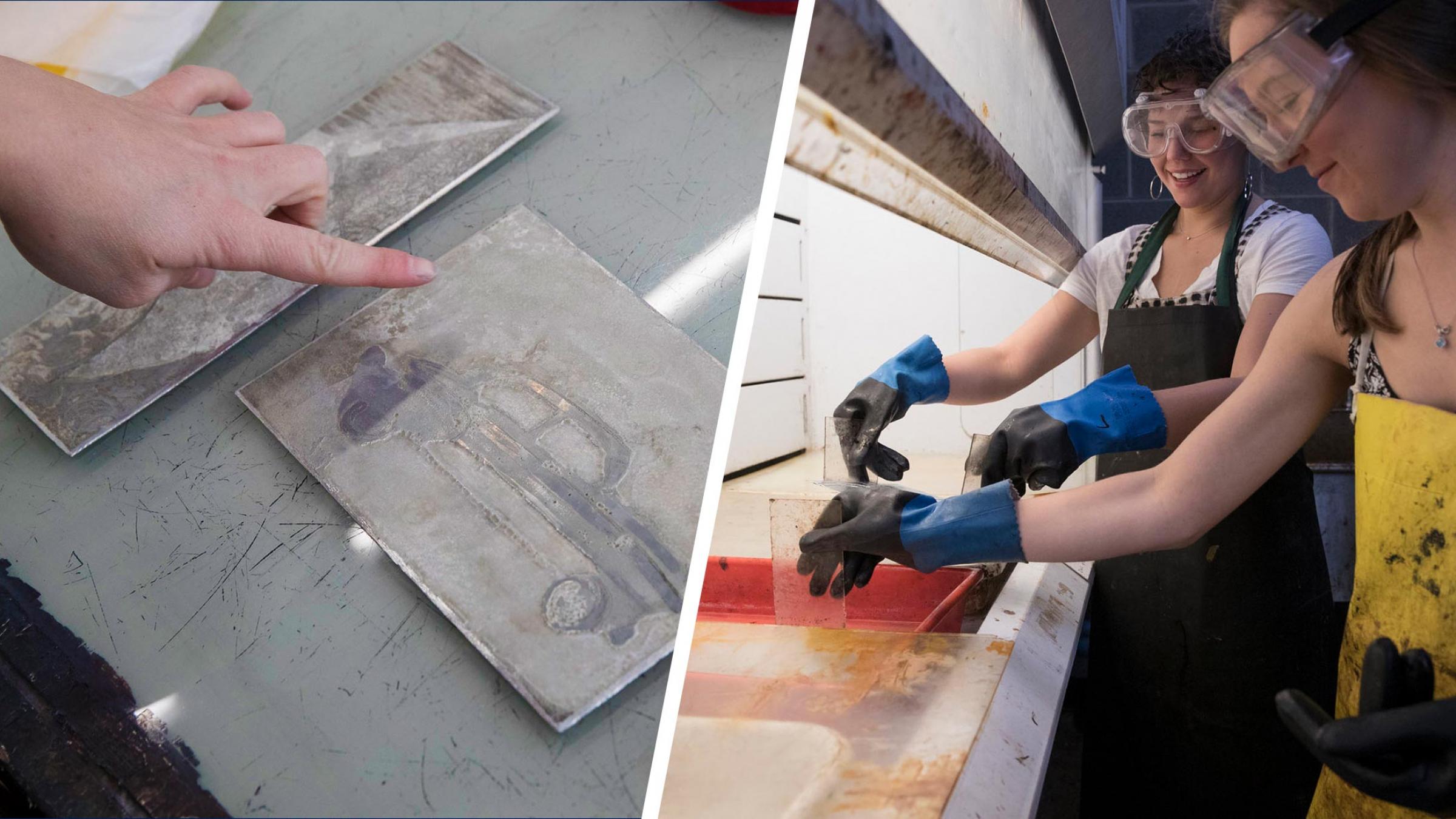
Dunne’s prints included this image of an old-fashioned car etched onto a zinc plate. The layers are etched in varying depths to accommodate three colors of ink. To make the zinc malleable enough for etching, Monk and Dunne dipped plates in a bath of nitric acid.
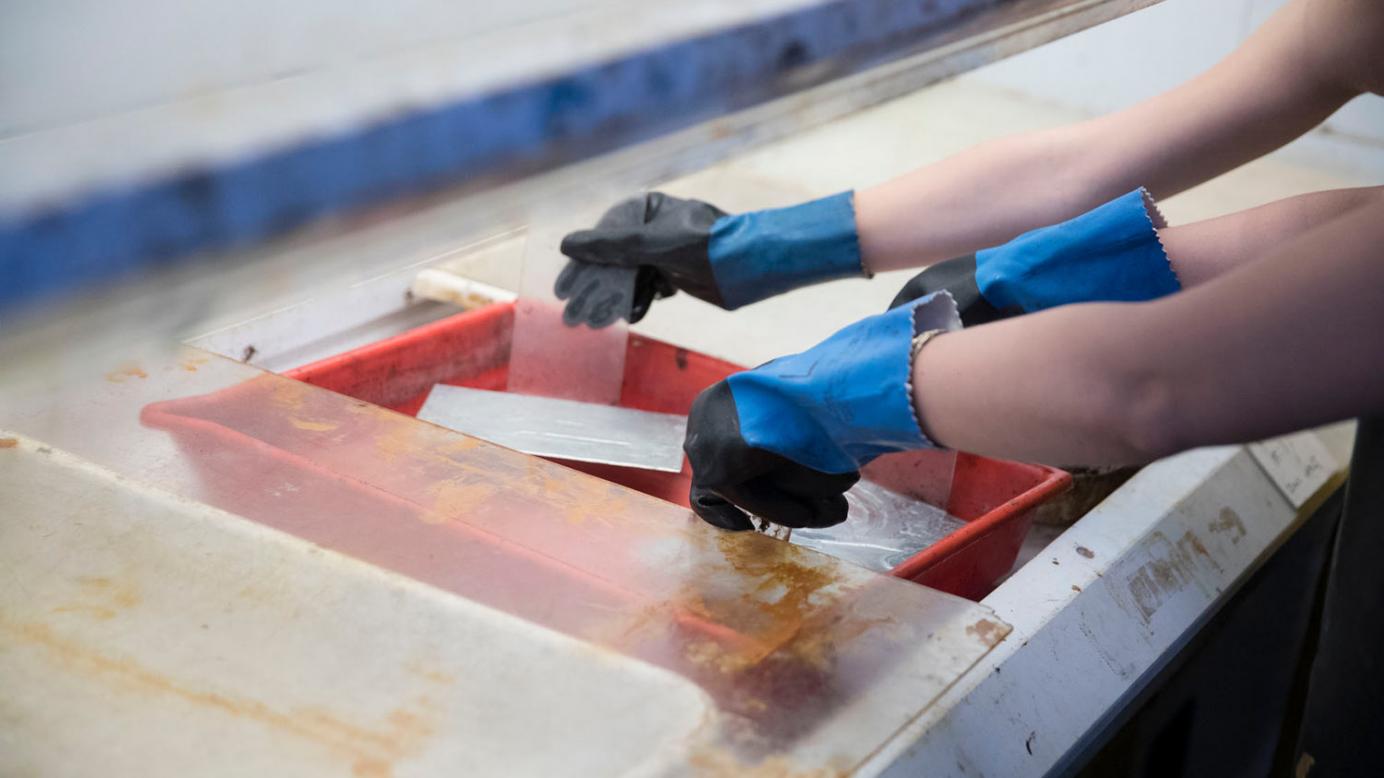
“Nitric acid reacts with zinc and causes it to erode in a very specific way,” said Dunne, the chemistry major. “You can then draw on it where you want lines to be etched.”
She said the printmaking process reminds her of her work in UVA’s chemistry labs.
“I love it because it is an extension of what I do in my chemistry classes,” she said. “It is kind of like another lab for me.”
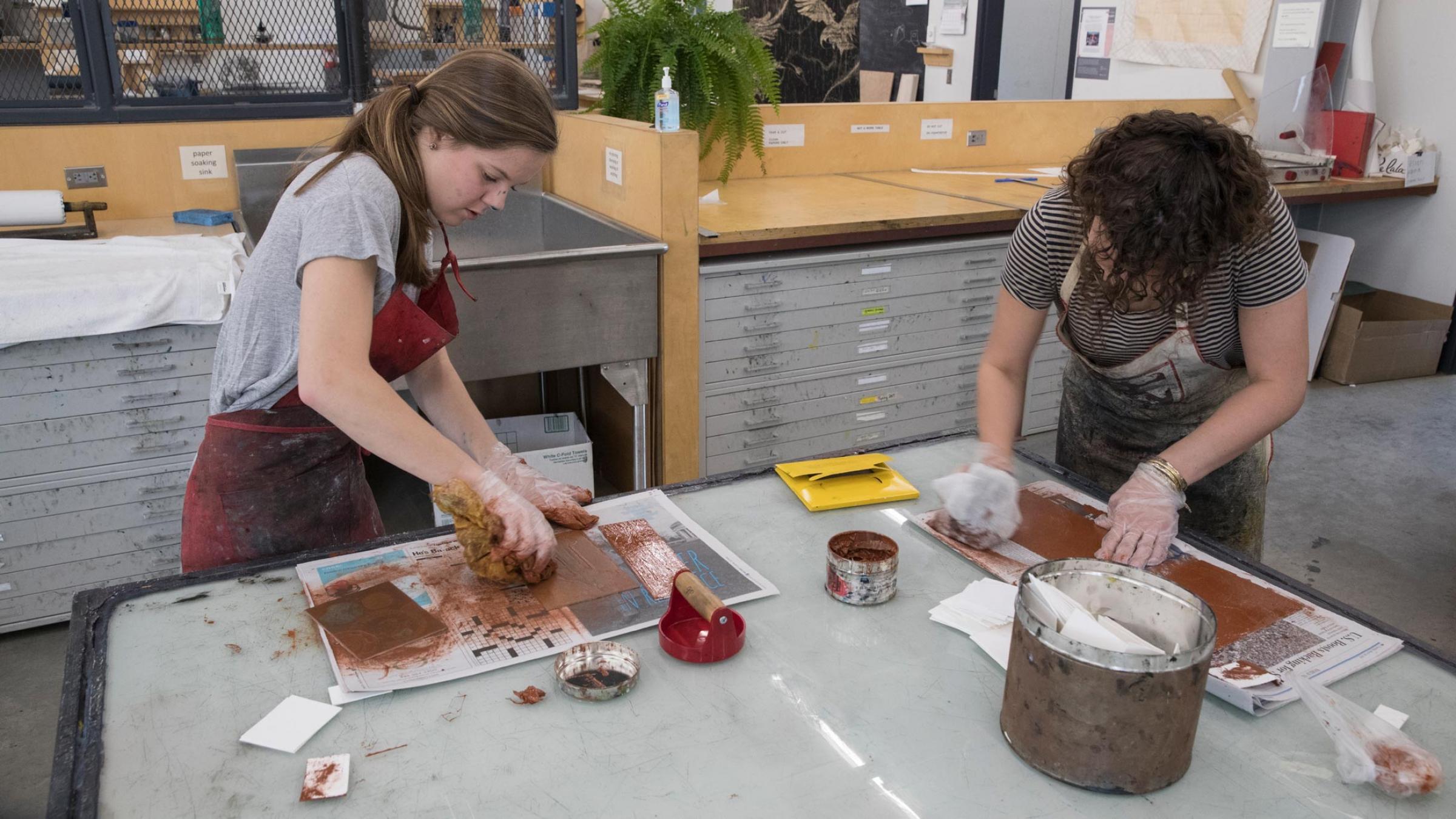
After etching the plates, Dunne, left, and Monk buffed them with a layer of ink, wiping off excess with cheesecloth as Ohira had instructed. They used three colors: the earthy burnt orange shown above, a light yellow and a dark teal.
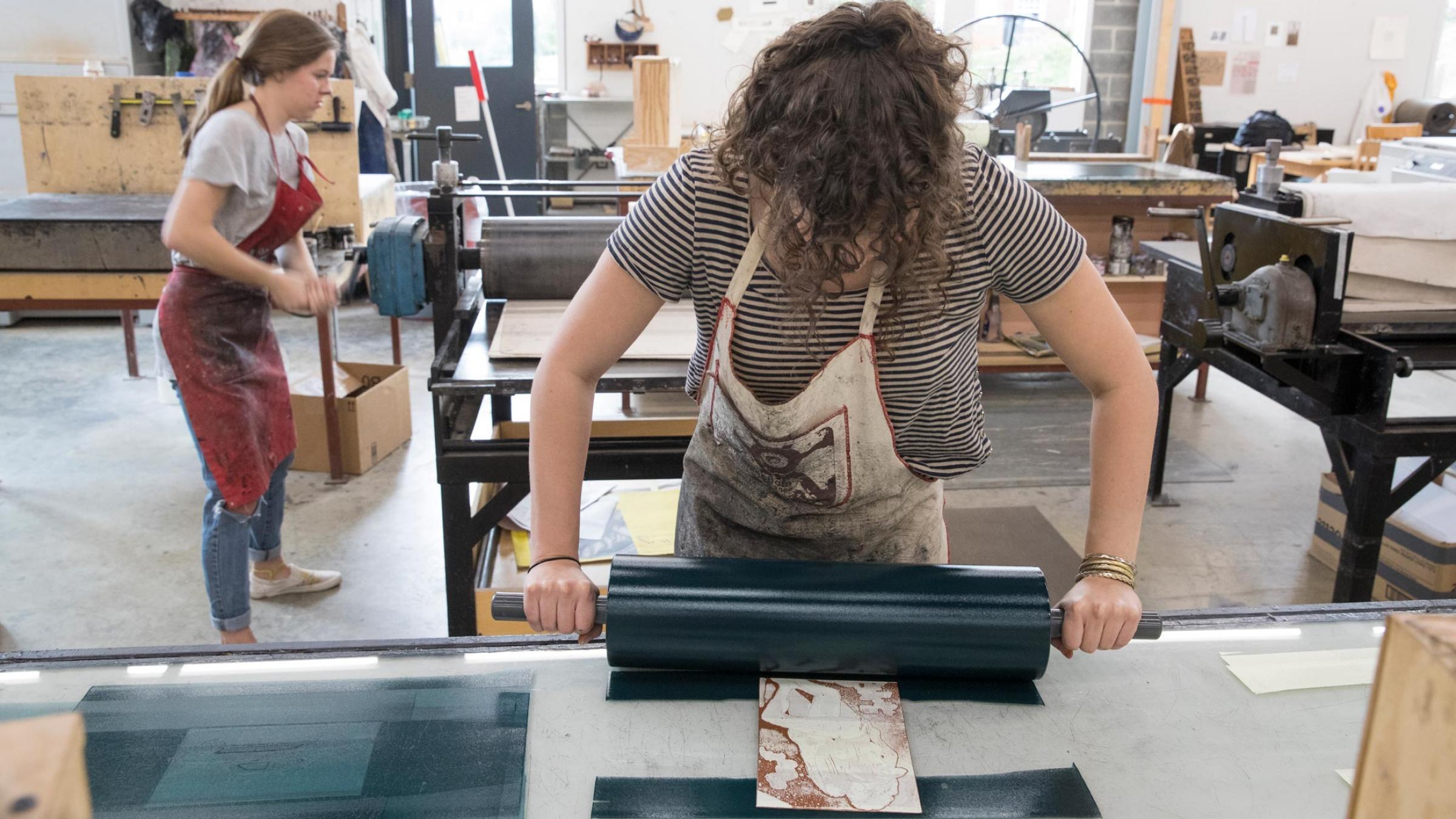
The final step of the process uses heavy metals rollers to transfer the designs to paper, with different thicknesses and weights required for each of the three colors. Above, Monk uses a hand roller while Dunne uses one of the studio’s printing presses.
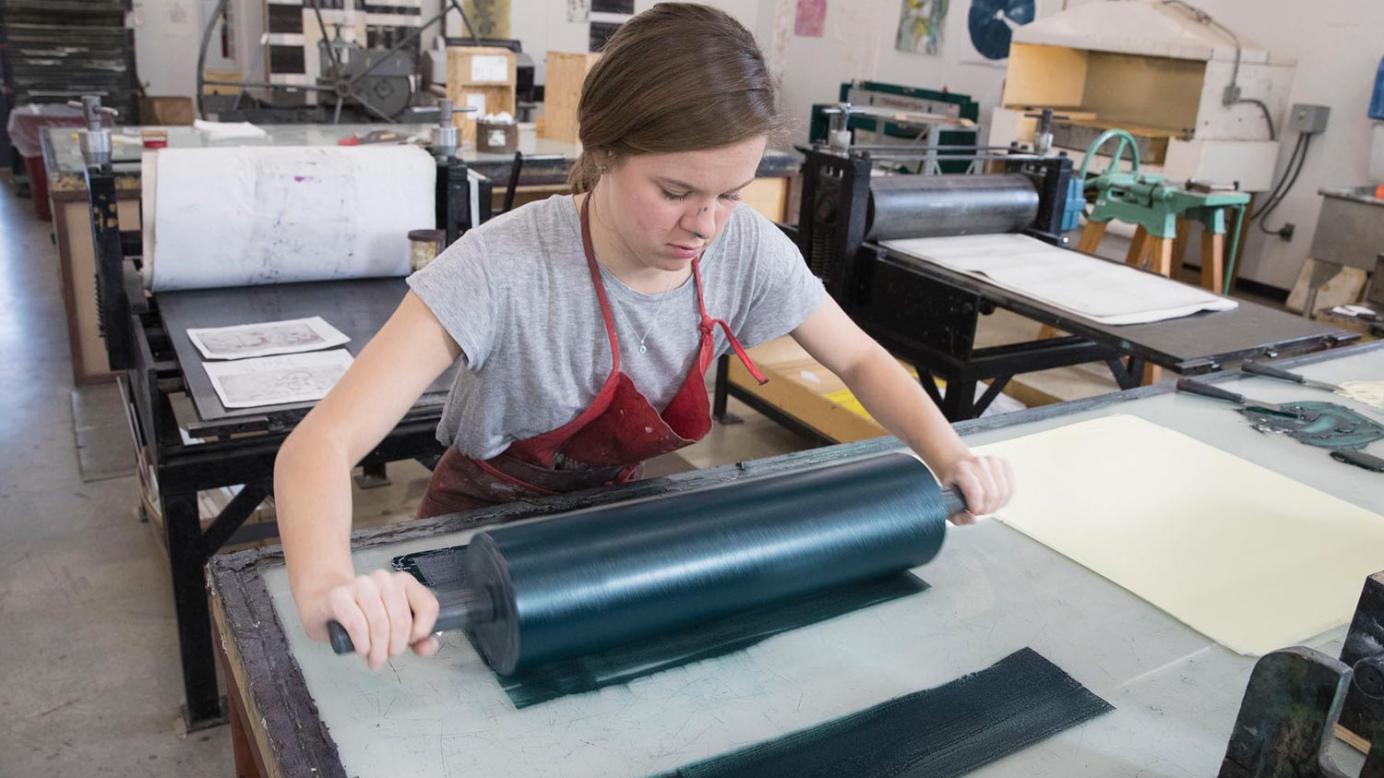
Typically, several proofs are required to get the print exactly right.
“Other mediums, like painting and drawing, are more controlled,” Dunne said. “With printmaking, there are so many variables that can go right or very wrong.”
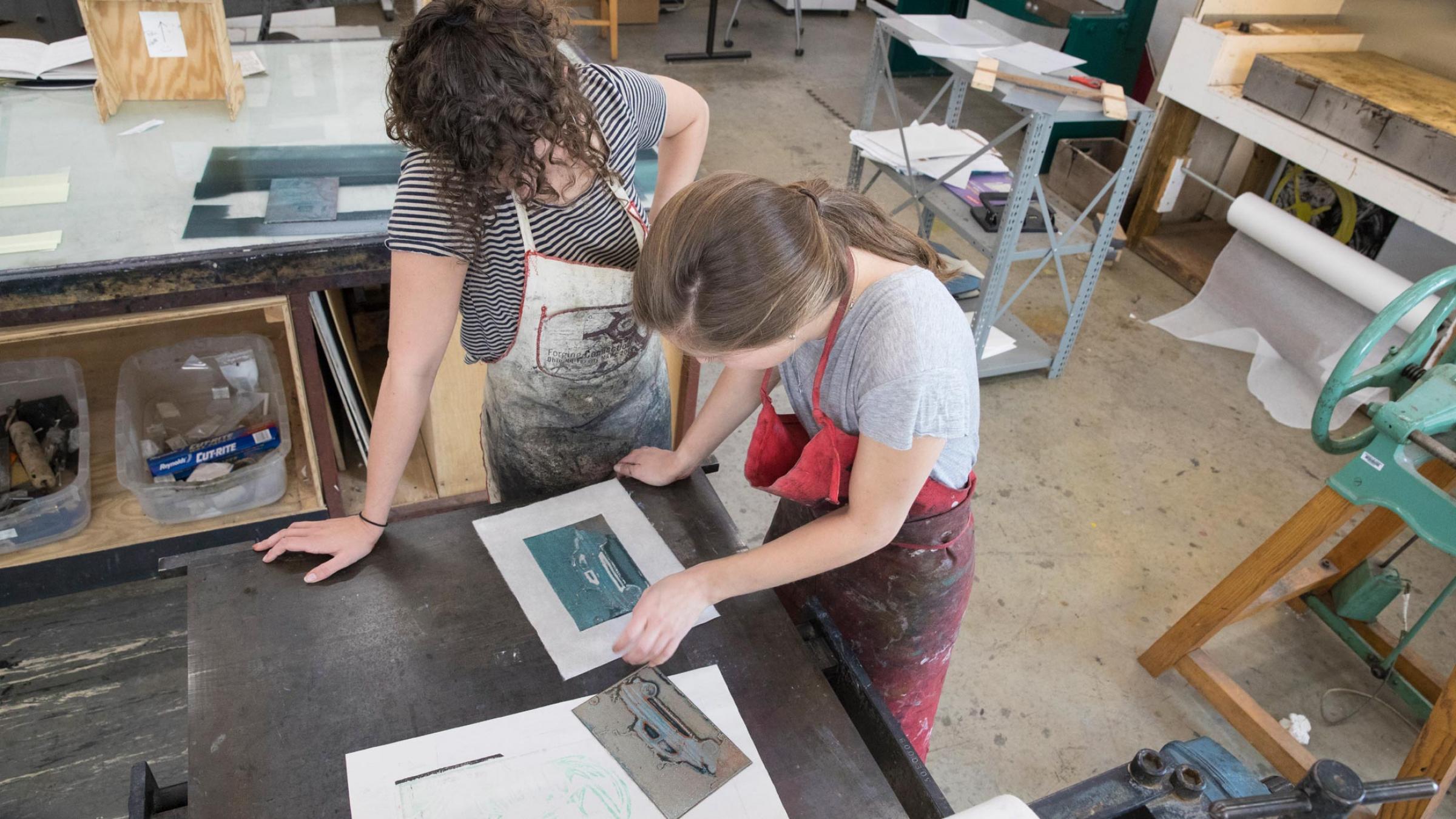
When they first printed their designs, Dunne and Monk had trouble getting all three ink colors to show through distinctly. One of their earlier proofs, shown above, came out mostly blue. Later, they realized that the consistency of the teal ink had been too thin.
“We joke that if your proof comes out right the first time, you have done something wrong,” Ohira said.
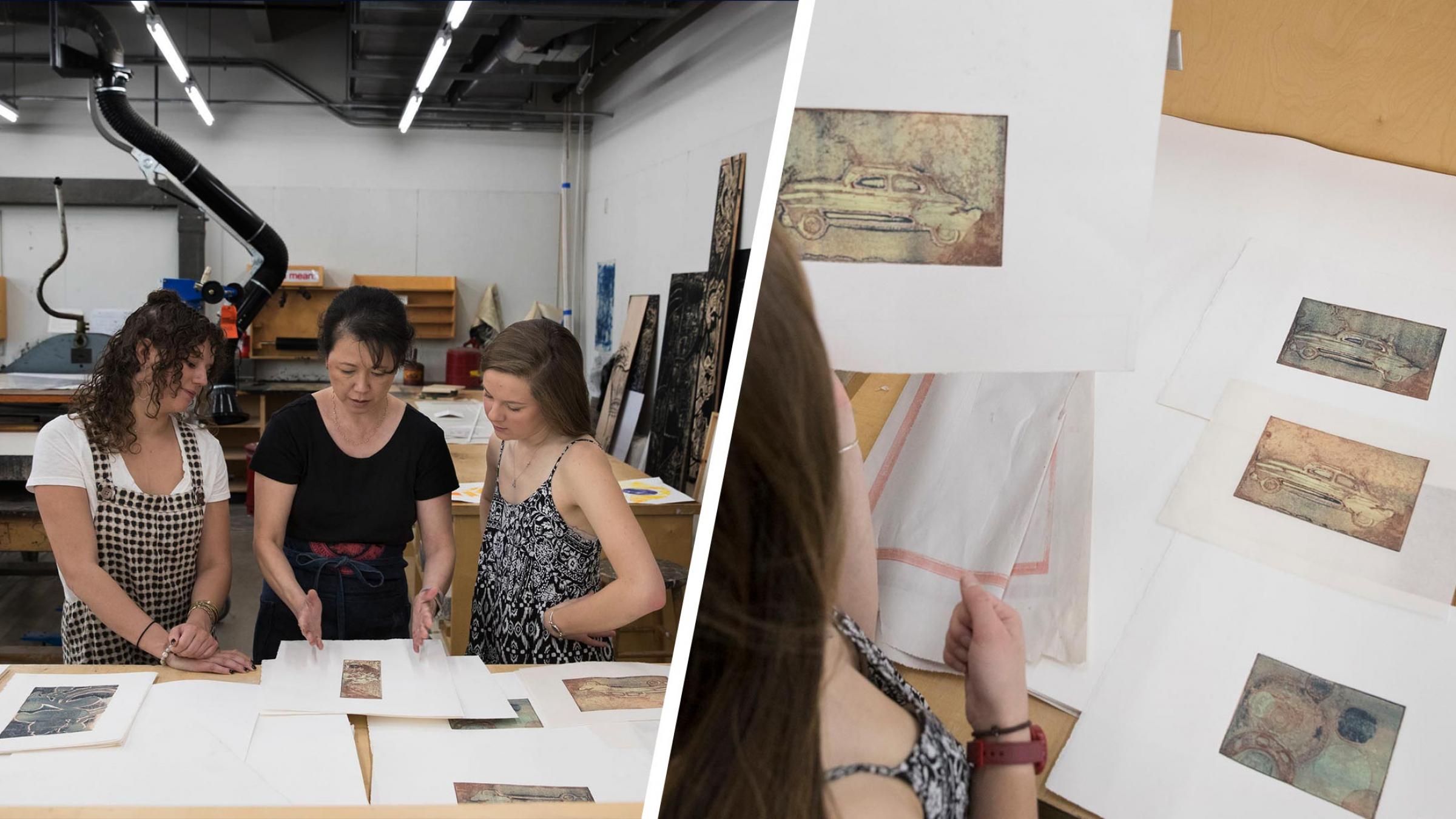
After a few more experiments, proofs and consultations with Ohira, Dunne and Monk were able to get the prints they envisioned. The final prints, shown right, subtly blend all three colors used in the printing process, exactly as Ohira asked the students to do.
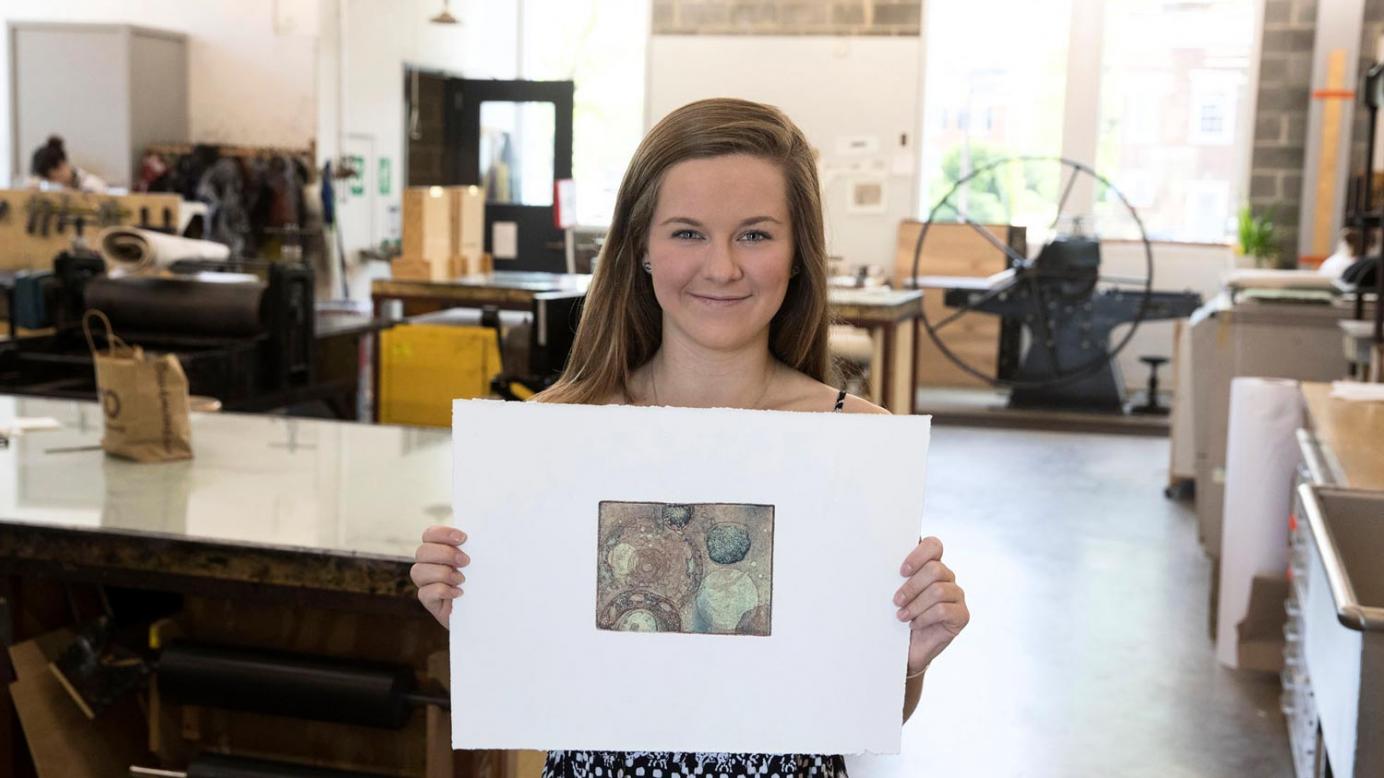
Dunne, above, holds one of her final prints, featuring overlapping concentric circles and abstract geometry similar to the molecules she studies in chemistry.Though she remains on a pre-med track, she said that her love of printmaking has prompted her to consider an engineering career as well. She is particularly interested in optical engineering, which focuses on optimizing light and color for different technologies.
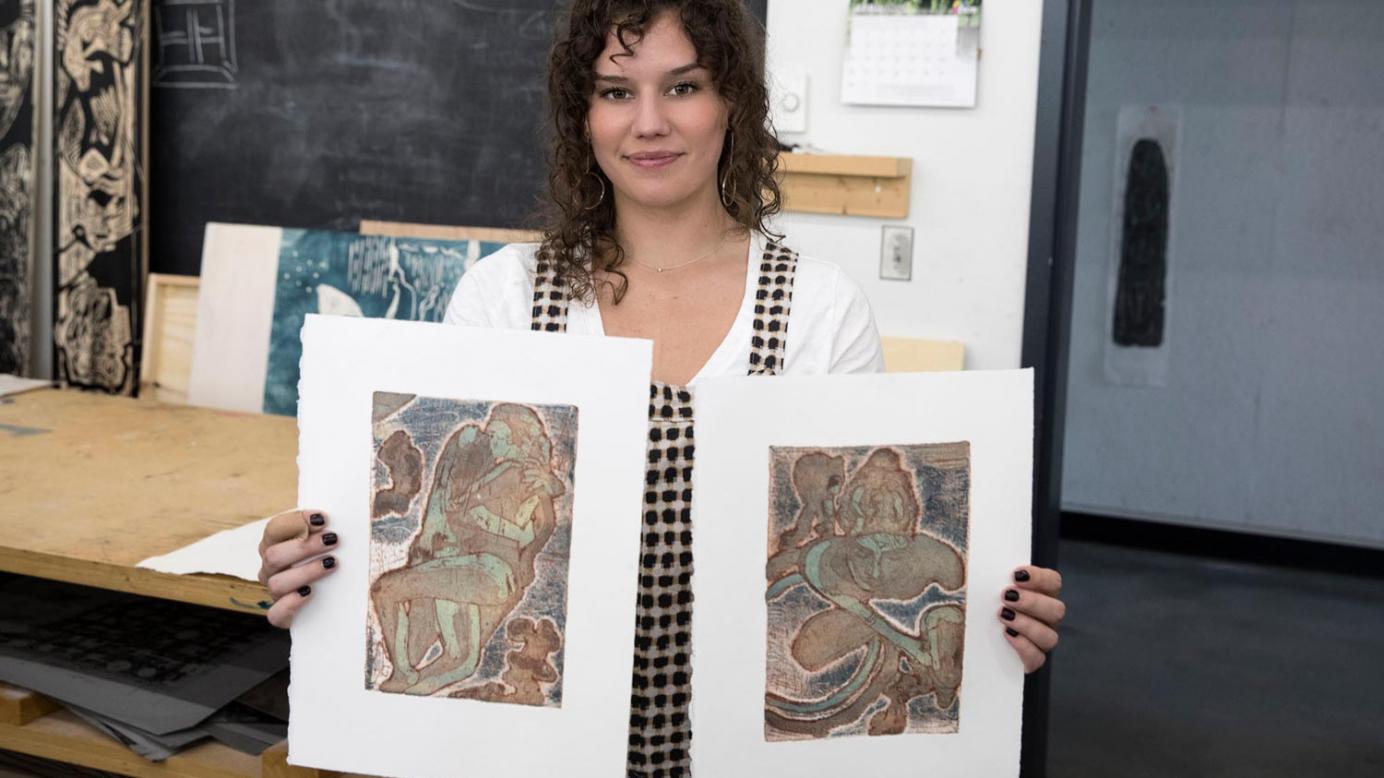
Monk, above, shows two final prints, each featuring human figures. She hopes to pursue a career in the arts, perhaps fundraising for museums or arts organizations. This summer, she will intern at the Virginia Museum of Fine Art in Richmond.“I love art and making art, and I think I will always be making art, but I also see myself helping other people pursue their art,” she said.
Caroline Newman
University News Associate
Office of University Communications
Original Publication: UVA Today
You are using an old version of Internet Explorer. Our site is developed with the latest technology, which is not supported by older browsers
We recommend that you use Google Chrome for accessing our (or any) website. It is a FREE and modern web-browser which supports the latest web technologies offering you a cleaner and more secure browsing experience.